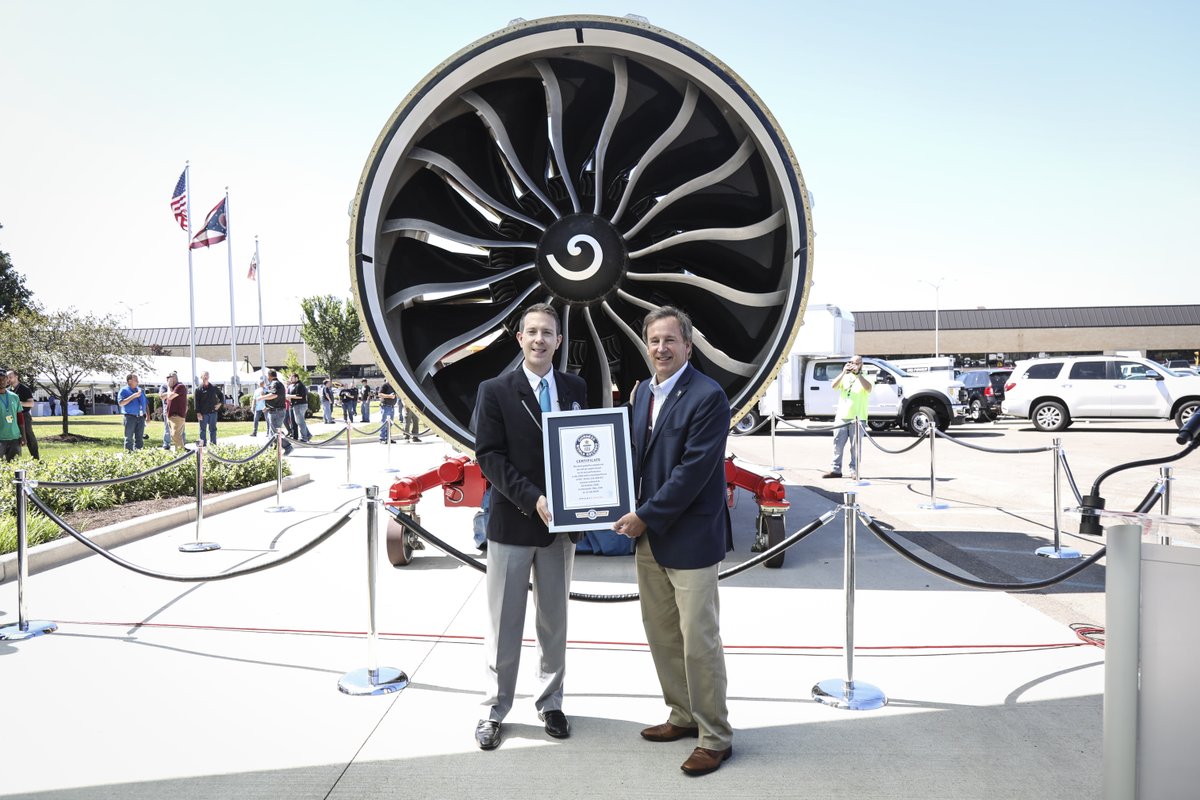The Guinness Book of World Records has officially declared the General Electric GE9X as the world’s most powerful jet engine!
Already the world’s largest commercial jet engine, the GE9X is now the most powerful, maintaining 134,300 pounds of thrust during an engineering test on the 10th of November 2017.
General Electric elected to announce the record with Guinness on the 12th of July 2019 as part of their 100-year celebration and most likely to keep their work protected.

The much loved GE90-115B that powers the Boeing 777-300ER was previously the record holder, proudly holding 127,900 pounds of thrust to its name during a test run in 2002.
Guinness Notes the record is based on testing conditions and not commercial operation.
Despite this impressive news the aircraft the GE9X will power, the Boeing 777X, will only have the engines rated to 105,000 pounds of thrust. However, this means larger and heavier variants can be developed with ease.

“While we didn’t set out to break the thrust Guinness World Record title, we are proud of the engine’s performance….”
David Joyce, President and Chief Executive of GE Aviation
The thrust capability demonstrated by the GE9X is several times more than the thrust of many fighter aircraft; it is also more than the rocket used in America’s first manned spaceflight, the Mercury-Redstone 3.
Additionally the entire engine, paired with its case assembly, is as wide as the fuselage of a Boeing 737!

Thanks to 16 carbon fiber composite fan blades, a highly efficient 27:1 high-pressure compressor, a third-generation low emissions TAPS III combustor and lightweight ceramic matrix composite materials, the GE9X is lighter, more efficient and more powerful than previous generation engines by a significant amount.
Although a slight design flaw has to be addressed, the engine is scheduled to be certified at the end of this year.
Over eight customers around the world have ordered more than 700 GE9X engines to power their upcoming fleet of Boeing 777X aircraft.
For those dying to hear the engine at a high power setting, check out this video from General Electric:




